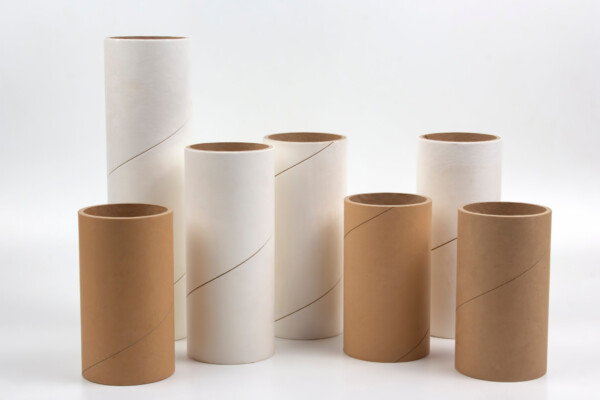Why Fireworks Companies Still Use Wooden Mortar Plugs
In the fireworks industry, a lot of time is spent talking about shells, firing systems, racks, and safety procedures. But if the plug at the bottom of a mortar fails, everything above it is at risk.
Even with new materials and experimental alternatives on the market, professional fireworks companies still rely on wooden mortar plugs. Simply put, they’re proven tools that get the job done.
While the plugs themselves are pretty basic, sourcing them isn’t always easy. Many suppliers only offer hobby-level quantities. Others may disappear when seasonal demand spikes. Some won’t even know what “mortar use” implies when they take your order for plugs.
So let’s break it down: why wood is still the standard, why certain known alternatives fall short, and how to avoid the yearly scramble to find a plug supplier you can trust.

Fireworks Display with Professional Mortar Launch
High-pressure lift charges depend on secure wooden plugs inside the mortar tubes.
The Benefits of Wooden Mortar Plugs
Alternatives Don’t Hold Up in Real Conditions
Foam discs may seem convenient, and PVC caps may appear strong. Some crews even experiment with improvised blocks or packaging scraps. But none of them behave like wood.
Foam loosens over time and shifts during handling. Plastic stiffens in cold weather and can crack. PVC has a strong chance of rattling inside a tube after repeated use. Makeshift materials vary slightly in thickness or diameter from piece to piece, which forces crews to adjust on the fly. And even when an improvised plug “works,” it usually leaves someone uneasy.
A reliable plug fit shouldn’t be a guess.
Why Wood Works So Well Inside a Mortar Tube
There’s a reason wood has stayed the standard while other materials come and go: it behaves predictably under pressure.
When lift charges fire, what happens inside the tube is fast and unforgiving. A plug has to hold firm long enough to let pressure build, then stay intact after it’s done. Wood handles that in a way other materials can’t.
Unlike plastic or PVC, wood doesn’t shatter when force hits. Instead, it absorbs shock across its grain structure. The fibers flex slightly instead of failing all at once. That tiny bit of give is what keeps the launch smooth.
There’s also friction at play. Plastic and foam tend to slide. Wood bites into the tube walls. That grip is what keeps plugs from shifting in transport or lifting prematurely before ignition.
Additionally, wood also isn’t affected by temperature swings the same way plastic is. Cold mornings, hot afternoons, damp trailers, and more: the material stays stable without turning soft.

Mortar Tubes Ready for Wooden Plug Installation
These tubes are only reliable once fitted with properly sized wooden mortar plugs.
The Problem Isn’t Always the Plug. It’s the Supplier.
Fireworks companies struggle with finding a supplier that delivers the same product every time. It needs to be on schedule and in volume, and the supplier can’t go silent during peak season.
Many sourcing stories can easily go like this:
You find a vendor online. Their pricing seems reasonable. You reach out for a bulk quote. Weeks pass. When they finally respond, there’s not always a guarantee of lead time. Maybe they only carry one size, or standard sizes that don’t work for you. Maybe they can’t match material from one order to the next. Or maybe they disappear altogether.
Don’t let your plug source change every year.
Seasonal Demand Shouldn’t Cause Panic
Everyone in this business knows the two major stress periods:
This is when plug suppliers either prove themselves or fall apart. If they fall apart, fireworks companies start scrambling.
What a Plug Supplier Should Deliver
If you’re running a professional display company, you need consistency. A real supplier should be able to provide:
Where H.A. Stiles Fits In
H.A. Stiles isn’t a hobby shop or a reseller. We are a U.S.-based wood product supplier with over 100 years of experience supplying industries where precision matters: architectural millwork, industrial components, custom manufacturing, and fireworks companies that need dependable wooden plugs in bulk.
We produce stable, repeatable parts at scale. If you need 500 plugs, we can deliver. If you need 50,000, we can quote it, schedule it, and repeat it without reinventing the process every time you reach out.
If you’re ready to stop gambling on plug sourcing, reach out to H.A. Stiles today for a free, no-obligation quote from a real person who cares about your order.
Frequently Asked Questions (FAQs) for Mortar Plugs
Generic wood discs or craft-store cutouts are risky. They may not be sized to fit mortar tubes correctly and will often crack under lift charge pressure. Pyrotechnic plugs are specifically engineered for predictable expansion, compression, and grain strength.
Fireworks companies will sometimes plan buffer inventory of at least 120% of expected mortar tube usage. Seasonal surges happen, so securing pyrotechnic plugs months in advance eliminates last-minute panic buying.
Most consumer suppliers only offer hobby quantities. For professional volumes, industrial wood component manufacturers like H.A. Stiles supply custom-dimension plugs in repeatable batches with consistent lead times.
The plug must match the inner diameter of your mortar tubes with a firm friction fit. For example, a 3-inch mortar tube have a 3-inch wooden pyrotechnic plug. Loose-fitting plugs reduce pressure efficiency and may shift during firing.
While some operators reuse mortar plugs, most professionals replace them after each season or after visible wear. Wood plugs absorb shock and compression with each blast, so reusing beyond their life cycle can reduce grip and safety reliability.
Yes. Cardboard or fiber-reinforced mortar tubes paired with wooden plugs are an industry-accepted standard for aerial shells. The wood plug reinforces the base of the tube and seals pressure effectively, as long as it is properly sized and seated.
Wooden mortar plugs flex under pressure. This allows lift charges to build force without shattering like plastic or softening like foam. Wood grips the inside of mortar tubes securely, which prevents shifting during transport or firing.
